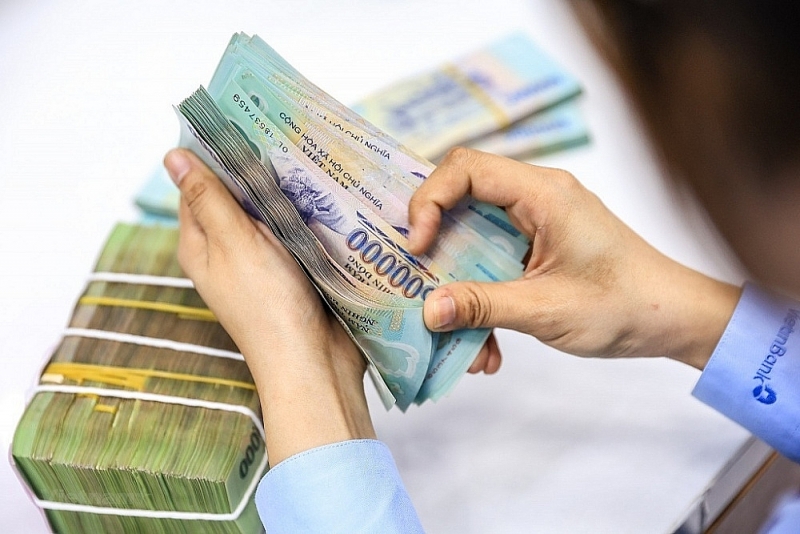Credit and access to credit: A problem for banks and businesses
Since the beginning of the year until now, the Prime Minister, the Government and the State Bank (SBV) have continuously issued instructions to promote credit, but the situation of banks having excess cash and businesses lacking capital is still a concern of the economy.
 |
|
Credit is expected to grow better but it depends on many factors. Photo: ST |
Having trouble with procedures and no need for a loan
According to data from the State Bank, in January 2024, credit across the system decreased by 0.6% compared to the end of 2023. A representative of the State Bank shared that in fact liquidity is very abundant but credit growth is slow compared to the same period of the previous year, mainly due to seasonal factors and the world economy has not really prospered. Therefore, the State Bank has implemented many solutions to promote credit growth, directing banks to reduce costs to strive to reduce lending interest rates.
A recent report sent to the Prime Minister by the Private Economic Development Research Board (Division IV, under the Prime Minister's Administrative Procedure Reform Advisory Council) has raised concerns about the increase in orders but businesses have run out of capital, no collateral to borrow more, and the recurring difficulty is not having money to produce.
According to businesses, the problem of accessing loans no longer lies in interest rates but in procedures. Many small and medium-sized businesses said that banks still appraise and evaluate loans using collateral instead of evaluating the effectiveness and feasibility of business plans.
According to Dr. Mac Quoc Anh, Vice President, General Secretary of Hanoi Association of Small and Medium Enterprises, currently the unsecured loan rate is only 15-20% while businesses want unsecured loans up to 35%, the remaining assets are collateral. At the same time, it is necessary to reduce loan conditions, banks can reduce the number of loan conditions by up to 50%, retaining only basic lending conditions.
Also on this issue, Mr. Nguyen Quoc Hung, General Secretary of the Vietnam Banks Association, said that the credit growth limit (room) in 2024 is no longer a problem because it has been fully granted by the State Bank of Vietnam to banks from the beginning of the year, there is a lot of lending space, so it is important that banks find good customers to lend to, especially in the context of bad debts tending to increase, so banks must strengthen control of credit quality risks.
In addition, banks also admitted that the credit situation was low, but the reason was also due to the economy's low demand and capital absorption capacity. At a recent credit conference, Vietcombank leaders said that credit decreased due to some sectors such as retail and real estate being quiet. Besides, the outstanding balance of international payment loans for trade finance in the first months of the year is still low, customers often tend to repay debt at the end of the year, etc so businesses have not borrowed much.
Deeply reduce interest rates, digitize loans
Vietnam's economy is recording some positive signals such as businesses increasing import of raw materials for production, trade surplus as well as high FDI inflows, etc helping orders increase again, leading to consumer demand and loans. Therefore, many forecasts say that credit can recover from March.
In order to promote credit, the Government has issued many instructions to the banking sector. The most recent of which is Official Dispatch No. 18/CD-TTg dated March 5, 2024 of Prime Minister Pham Minh Chinh on managing credit growth in 2024. The Prime Minister requested the State Bank to direct credit institutions continue to reduce lending interest rates, especially the average lending interest rates must be publicly announced so that people and businesses can conveniently access credit and choose banks to borrow capital. Along with that, banks must promote the effective implementation of appropriate preferential credit packages, directing credit capital to production and business areas, priority areas and traditional growth drivers such as consumption, investment, export, digital transformation, etc; Continue to strictly control credit in potentially risky area, etc.
Therefore, the banking system has been implementing many solutions synchronously, both lowering interest rates and offering preferential credit programs. For example, many commercial banks have deeply adjusted deposit interest rates, helping the average lending interest rate of new and old outstanding loans to be at 8.1-10.2%/year. The strategic report of SSI Securities Company recently stated that the State Bank still has room to implement another policy interest rate cut in 2024.
Regarding preferential credit programs, from the beginning of 2024, Vietcombank offers an interest rate policy of only 5.3%/year for short-term production and business loans and interest rates from only 6.5%/year for medium and long-term loans for individual customers and small and medium-sized businesses. SHB is implementing a preferential interest rate program for businesses with a scale of 11,000 billion VND, preferential interest rates in USD for FDI enterprises and businesses with export activities of 50 million USD with the applicable interest rate of 6.63%/year, etc.
In addition, banks also promote digitalization of the lending process to shorten loan procedures and create convenience for customers. Typically, BIDV has applied technology from receiving loan needs to initiating, implementing and managing loans for institutional and retail customers; MSB is also completing the straight loan stream (STP) project, moving towards touchless lending with corporate customers, helping customers receive loan approval within 4 hours, etc.








